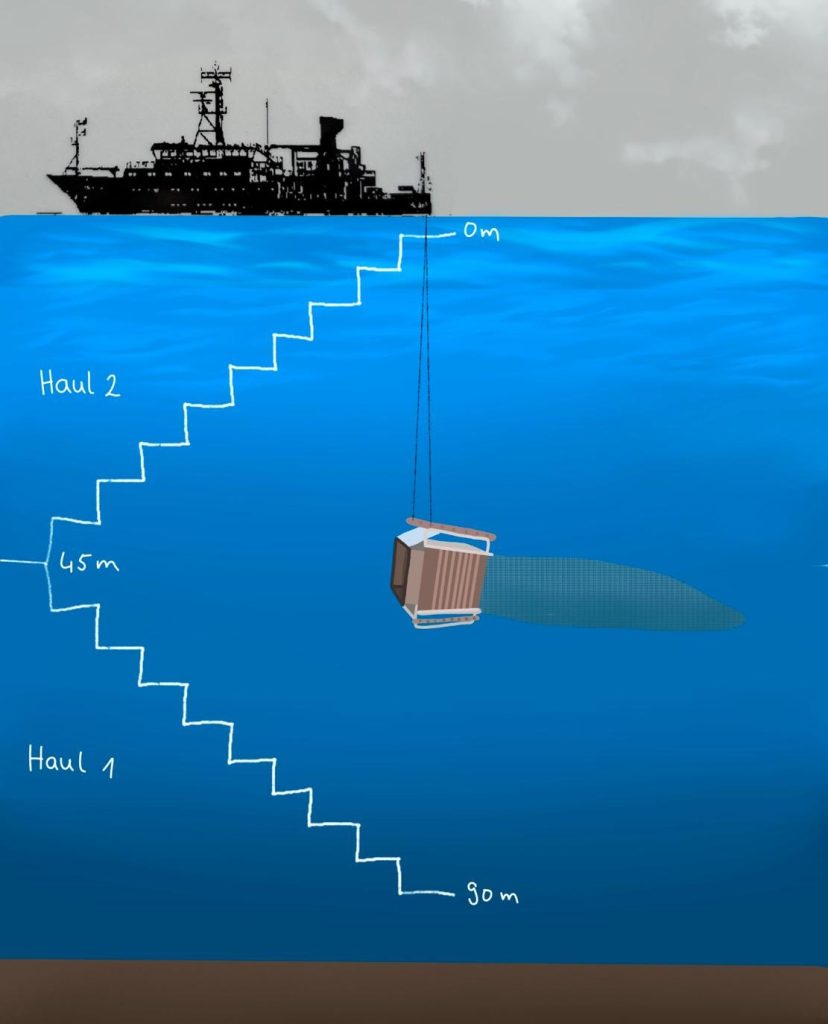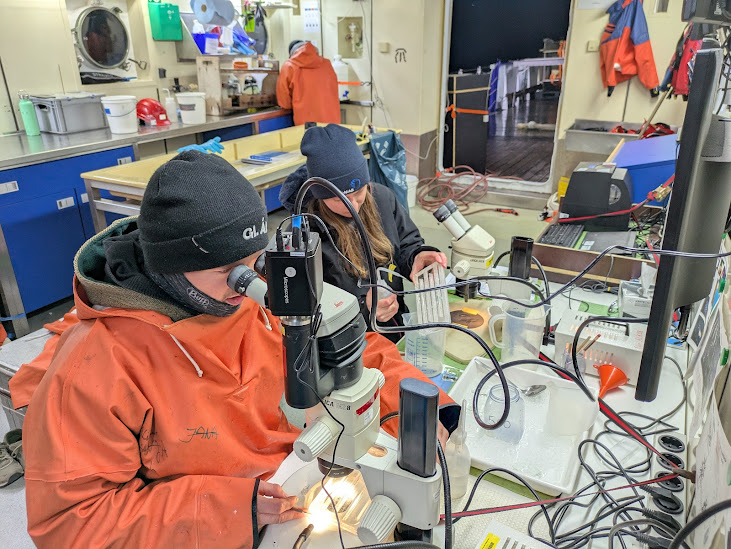
Fresh off RV Alkor and back in Kiel, I’m excited to share another blog post about our scientific research cruise AL630. I’d like to tell you something about one of the sampling methods that we used during the cruise.
To track the daily movements of zooplankton in the water column at our station BB23 – the station in central Bornholm Basin already mentioned in earlier blog posts, with a water depth of ca. 96 m – we used a Multinet Maxi, a piece of gear equipped with nine individual nets (each with a mesh size of 335 µm) that can be opened and closed one by one at different depths.
Here’s how it worked: at a tow speed of 3 knots (3 nautical miles/hour, ca. 5.5 km/h), we first lowered the Multinet to a depth of 45 meters, stabilized it at that depth, and then continued down to 90 meters in 5-meter steps. At each depth, one net was opened for three minutes before being closed again. After closing the last net, the Multinet was hauled back onboard, the nets were emptied and the content transferred to small containers for later analysis. Then it was time for the second haul, this time starting at 45 meters but then targeting the shallower water depths upward to the surface in 5-meter steps. Altogether, within a short time period, we thus collected 18 samples covering the entire water column from the surface to right above the sea floor in 5 m depth layers.

Back in the lab (in our case on the moving ship), each sample was examined under the stereo microscope, with special attention given to fish larvae and jellyfish.
This sampling procedure was repeated four times over a 24-hour cycle, at 6:00 PM, 12:00 AM, 6:00 AM, and 12:00 PM, to capture diurnal changes (i.e., changes over the course of a 24 hour period) in zooplankton distribution. To allow this intense sampling program, we worked in shifts throughout the day and night.
This method lets us observe a fascinating phenomenon known as diel vertical migration: zooplankton dive into deeper, darker waters during the day to avoid predators, and return to the surface at night to feed on phytoplankton. Using the depth sampling provided by the Multinet enables us to detect these daily shifts in vertical distribution.
I hope that I was able to give you a better sense of one more aspect of the work we did aboard RV Alkor during our cruise.
Back in Kiel and sending greetings your way, Leandra

